Litian Zhang
Devil's Hand: Data Poisoning Attacks to Locally Private Graph Learning Protocols
Jun 11, 2025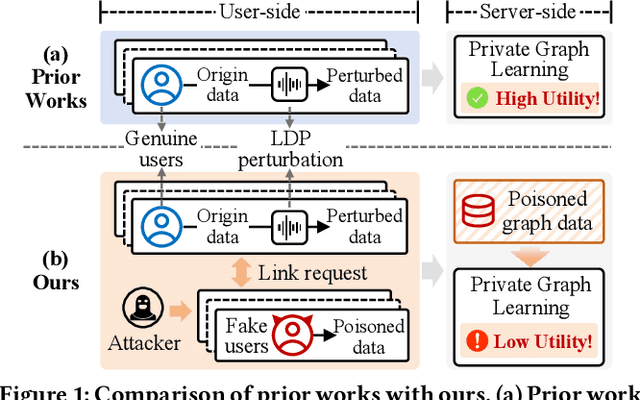
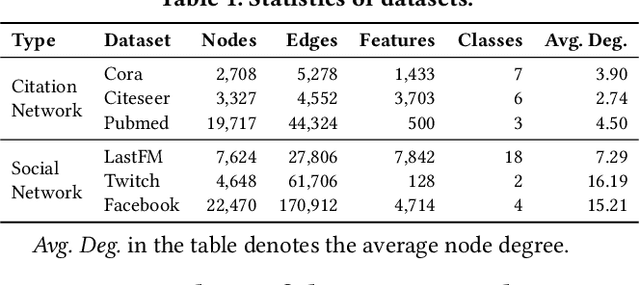
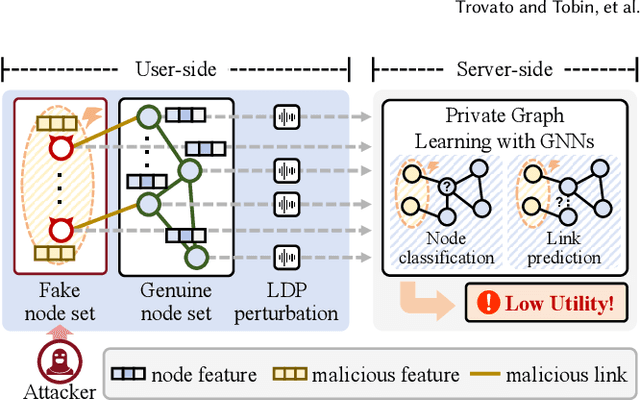
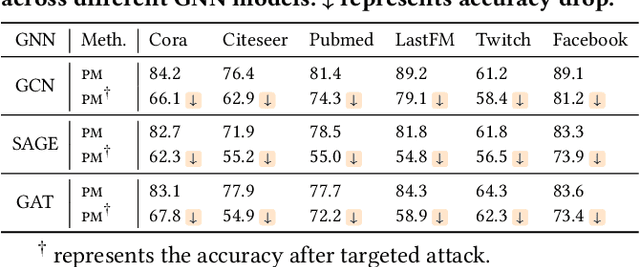
Abstract:Graph neural networks (GNNs) have achieved significant success in graph representation learning and have been applied to various domains. However, many real-world graphs contain sensitive personal information, such as user profiles in social networks, raising serious privacy concerns when graph learning is performed using GNNs. To address this issue, locally private graph learning protocols have gained considerable attention. These protocols leverage the privacy advantages of local differential privacy (LDP) and the effectiveness of GNN's message-passing in calibrating noisy data, offering strict privacy guarantees for users' local data while maintaining high utility (e.g., node classification accuracy) for graph learning. Despite these advantages, such protocols may be vulnerable to data poisoning attacks, a threat that has not been considered in previous research. Identifying and addressing these threats is crucial for ensuring the robustness and security of privacy-preserving graph learning frameworks. This work introduces the first data poisoning attack targeting locally private graph learning protocols. The attacker injects fake users into the protocol, manipulates these fake users to establish links with genuine users, and sends carefully crafted data to the server, ultimately compromising the utility of private graph learning. The effectiveness of the attack is demonstrated both theoretically and empirically. In addition, several defense strategies have also been explored, but their limited effectiveness highlights the need for more robust defenses.
Lifelong Evolution: Collaborative Learning between Large and Small Language Models for Continuous Emergent Fake News Detection
Jun 05, 2025Abstract:The widespread dissemination of fake news on social media has significantly impacted society, resulting in serious consequences. Conventional deep learning methodologies employing small language models (SLMs) suffer from extensive supervised training requirements and difficulties adapting to evolving news environments due to data scarcity and distribution shifts. Large language models (LLMs), despite robust zero-shot capabilities, fall short in accurately detecting fake news owing to outdated knowledge and the absence of suitable demonstrations. In this paper, we propose a novel Continuous Collaborative Emergent Fake News Detection (C$^2$EFND) framework to address these challenges. The C$^2$EFND framework strategically leverages both LLMs' generalization power and SLMs' classification expertise via a multi-round collaborative learning framework. We further introduce a lifelong knowledge editing module based on a Mixture-of-Experts architecture to incrementally update LLMs and a replay-based continue learning method to ensure SLMs retain prior knowledge without retraining entirely. Extensive experiments on Pheme and Twitter16 datasets demonstrate that C$^2$EFND significantly outperforms existed methods, effectively improving detection accuracy and adaptability in continuous emergent fake news scenarios.
Diffusion with a Linguistic Compass: Steering the Generation of Clinically Plausible Future sMRI Representations for Early MCI Conversion Prediction
Jun 05, 2025Abstract:Early prediction of Mild Cognitive Impairment (MCI) conversion is hampered by a trade-off between immediacy--making fast predictions from a single baseline sMRI--and accuracy--leveraging longitudinal scans to capture disease progression. We propose MCI-Diff, a diffusion-based framework that synthesizes clinically plausible future sMRI representations directly from baseline data, achieving both real-time risk assessment and high predictive performance. First, a multi-task sequence reconstruction strategy trains a shared denoising network on interpolation and extrapolation tasks to handle irregular follow-up sampling and learn robust latent trajectories. Second, an LLM-driven "linguistic compass" is introduced for clinical plausibility sampling: generated feature candidates are quantized, tokenized, and scored by a fine-tuned language model conditioned on expected structural biomarkers, guiding autoregressive generation toward realistic disease patterns. Experiments on ADNI and AIBL cohorts show that MCI-Diff outperforms state-of-the-art baselines, improving early conversion accuracy by 5-12%.
Collaborative Evolution: Multi-Round Learning Between Large and Small Language Models for Emergent Fake News Detection
Mar 27, 2025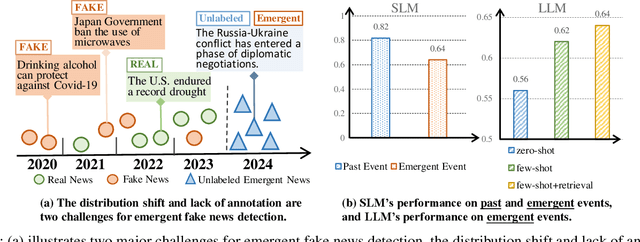
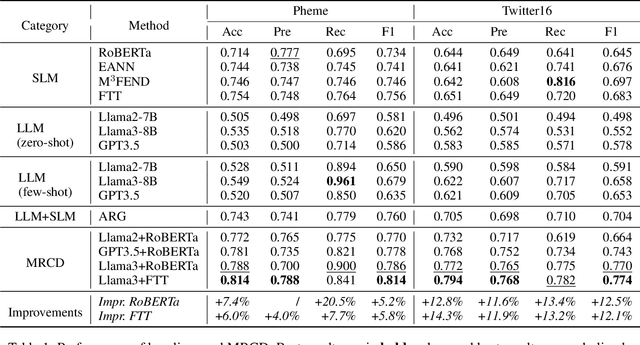
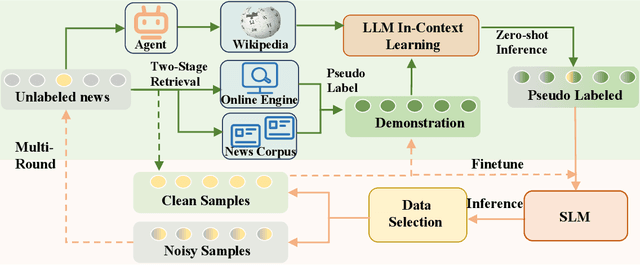
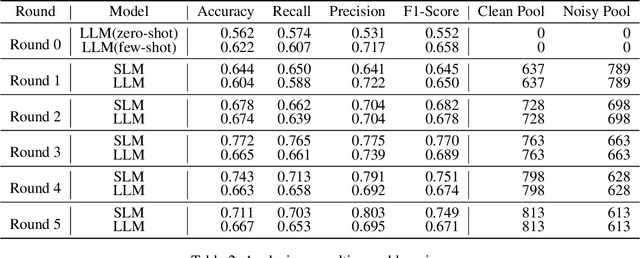
Abstract:The proliferation of fake news on social media platforms has exerted a substantial influence on society, leading to discernible impacts and deleterious consequences. Conventional deep learning methodologies employing small language models (SLMs) suffer from the necessity for extensive supervised training and the challenge of adapting to rapidly evolving circumstances. Large language models (LLMs), despite their robust zero-shot capabilities, have fallen short in effectively identifying fake news due to a lack of pertinent demonstrations and the dynamic nature of knowledge. In this paper, a novel framework Multi-Round Collaboration Detection (MRCD) is proposed to address these aforementioned limitations. The MRCD framework is capable of enjoying the merits from both LLMs and SLMs by integrating their generalization abilities and specialized functionalities, respectively. Our approach features a two-stage retrieval module that selects relevant and up-to-date demonstrations and knowledge, enhancing in-context learning for better detection of emerging news events. We further design a multi-round learning framework to ensure more reliable detection results. Our framework MRCD achieves SOTA results on two real-world datasets Pheme and Twitter16, with accuracy improvements of 7.4\% and 12.8\% compared to using only SLMs, which effectively addresses the limitations of current models and improves the detection of emergent fake news.
MirrorGuard: Adaptive Defense Against Jailbreaks via Entropy-Guided Mirror Crafting
Mar 17, 2025Abstract:Defending large language models (LLMs) against jailbreak attacks is crucial for ensuring their safe deployment. Existing defense strategies generally rely on predefined static criteria to differentiate between harmful and benign prompts. However, such rigid rules are incapable of accommodating the inherent complexity and dynamic nature of real jailbreak attacks. In this paper, we propose a novel concept of ``mirror'' to enable dynamic and adaptive defense. A mirror refers to a dynamically generated prompt that mirrors the syntactic structure of the input while ensuring semantic safety. The personalized discrepancies between the input prompts and their corresponding mirrors serve as the guiding principles for defense. A new defense paradigm, MirrorGuard, is further proposed to detect and calibrate risky inputs based on such mirrors. An entropy-based detection metric, Relative Input Uncertainty (RIU), is integrated into MirrorGuard to quantify the discrepancies between input prompts and mirrors. MirrorGuard is evaluated on several popular datasets, demonstrating state-of-the-art defense performance while maintaining general effectiveness.
Beyond Self-Talk: A Communication-Centric Survey of LLM-Based Multi-Agent Systems
Feb 20, 2025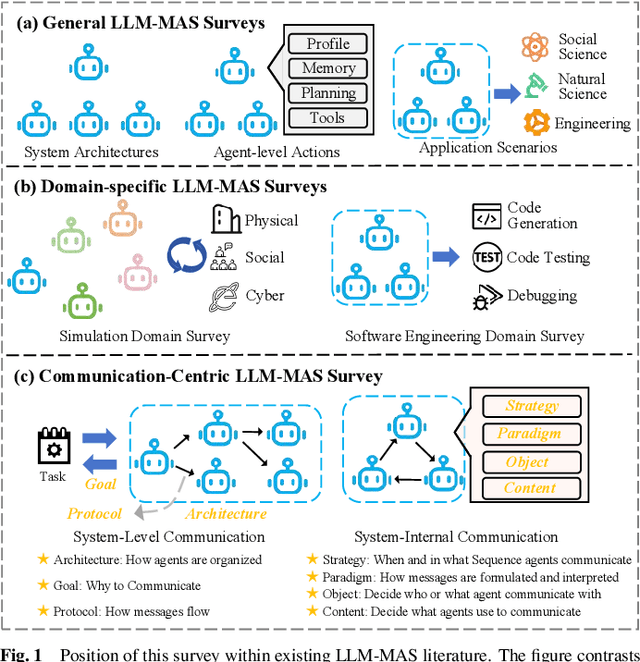
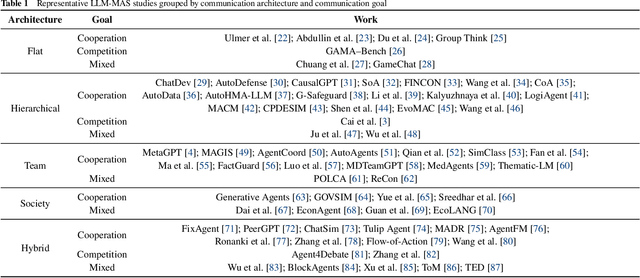
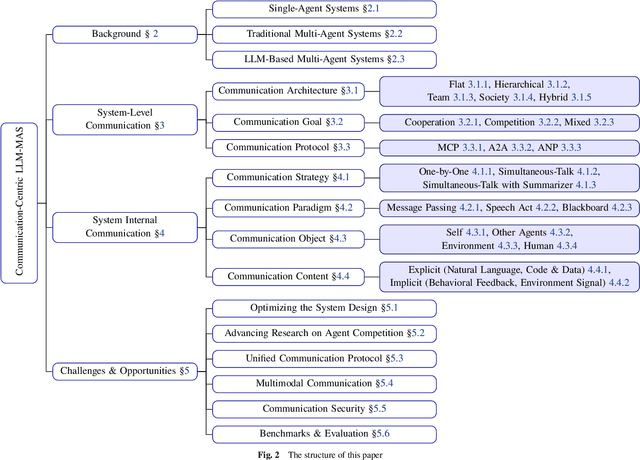
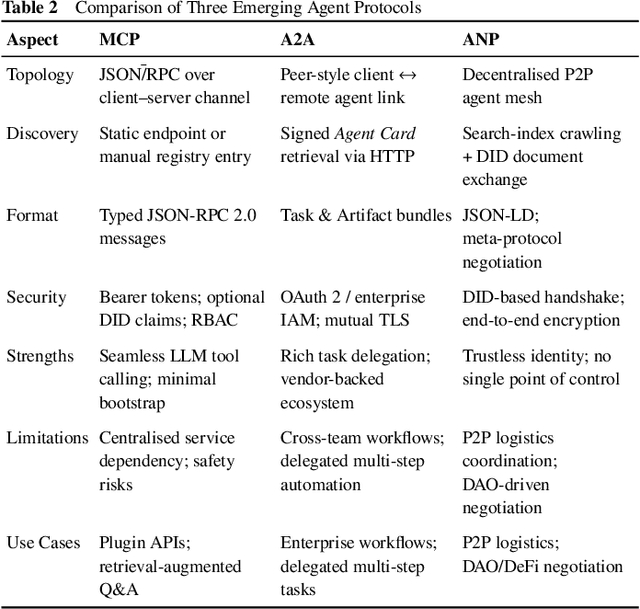
Abstract:Large Language Models (LLMs) have recently demonstrated remarkable capabilities in reasoning, planning, and decision-making. Building upon these strengths, researchers have begun incorporating LLMs into multi-agent systems (MAS), where agents collaborate or compete through natural language interactions to tackle tasks beyond the scope of single-agent setups. In this survey, we present a communication-centric perspective on LLM-based multi-agent systems, examining key system-level features such as architecture design and communication goals, as well as internal mechanisms like communication strategies, paradigms, objects and content. We illustrate how these communication elements interplay to enable collective intelligence and flexible collaboration. Furthermore, we discuss prominent challenges, including scalability, security, and multimodal integration, and propose directions for future work to advance research in this emerging domain. Ultimately, this survey serves as a catalyst for further innovation, fostering more robust, scalable, and intelligent multi-agent systems across diverse application domains.
HNCSE: Advancing Sentence Embeddings via Hybrid Contrastive Learning with Hard Negatives
Nov 19, 2024
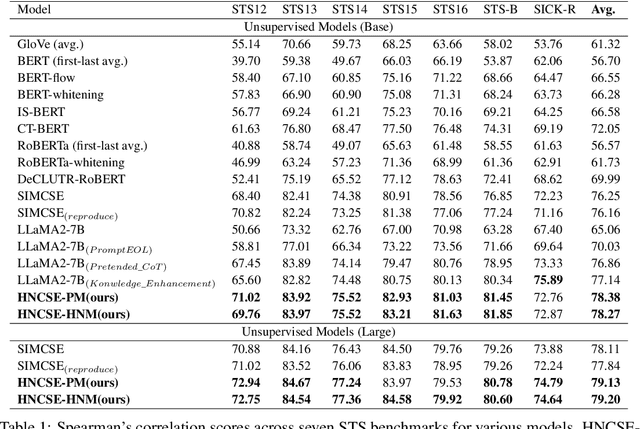
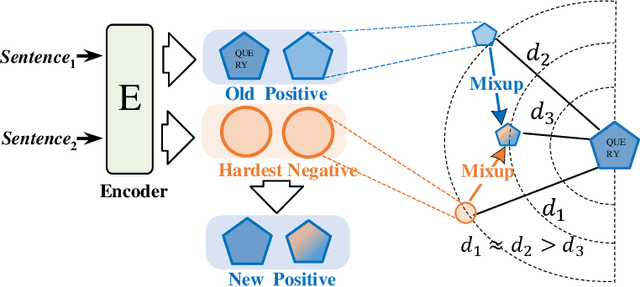
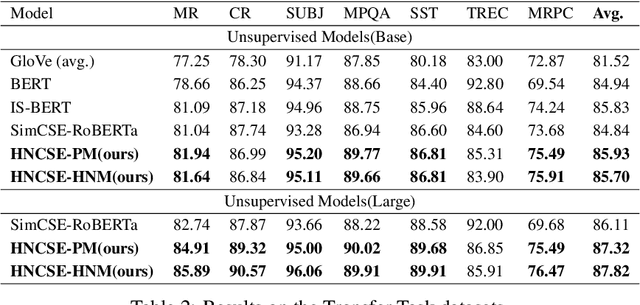
Abstract:Unsupervised sentence representation learning remains a critical challenge in modern natural language processing (NLP) research. Recently, contrastive learning techniques have achieved significant success in addressing this issue by effectively capturing textual semantics. Many such approaches prioritize the optimization using negative samples. In fields such as computer vision, hard negative samples (samples that are close to the decision boundary and thus more difficult to distinguish) have been shown to enhance representation learning. However, adapting hard negatives to contrastive sentence learning is complex due to the intricate syntactic and semantic details of text. To address this problem, we propose HNCSE, a novel contrastive learning framework that extends the leading SimCSE approach. The hallmark of HNCSE is its innovative use of hard negative samples to enhance the learning of both positive and negative samples, thereby achieving a deeper semantic understanding. Empirical tests on semantic textual similarity and transfer task datasets validate the superiority of HNCSE.
Feint and Attack: Attention-Based Strategies for Jailbreaking and Protecting LLMs
Oct 18, 2024



Abstract:Jailbreak attack can be used to access the vulnerabilities of Large Language Models (LLMs) by inducing LLMs to generate the harmful content. And the most common method of the attack is to construct semantically ambiguous prompts to confuse and mislead the LLMs. To access the security and reveal the intrinsic relation between the input prompt and the output for LLMs, the distribution of attention weight is introduced to analyze the underlying reasons. By using statistical analysis methods, some novel metrics are defined to better describe the distribution of attention weight, such as the Attention Intensity on Sensitive Words (Attn_SensWords), the Attention-based Contextual Dependency Score (Attn_DepScore) and Attention Dispersion Entropy (Attn_Entropy). By leveraging the distinct characteristics of these metrics, the beam search algorithm and inspired by the military strategy "Feint and Attack", an effective jailbreak attack strategy named as Attention-Based Attack (ABA) is proposed. In the ABA, nested attack prompts are employed to divert the attention distribution of the LLMs. In this manner, more harmless parts of the input can be used to attract the attention of the LLMs. In addition, motivated by ABA, an effective defense strategy called as Attention-Based Defense (ABD) is also put forward. Compared with ABA, the ABD can be used to enhance the robustness of LLMs by calibrating the attention distribution of the input prompt. Some comparative experiments have been given to demonstrate the effectiveness of ABA and ABD. Therefore, both ABA and ABD can be used to access the security of the LLMs. The comparative experiment results also give a logical explanation that the distribution of attention weight can bring great influence on the output for LLMs.
Beyond Entity Alignment: Towards Complete Knowledge Graph Alignment via Entity-Relation Synergy
Jul 25, 2024



Abstract:Knowledge Graph Alignment (KGA) aims to integrate knowledge from multiple sources to address the limitations of individual Knowledge Graphs (KGs) in terms of coverage and depth. However, current KGA models fall short in achieving a ``complete'' knowledge graph alignment. Existing models primarily emphasize the linkage of cross-graph entities but overlook aligning relations across KGs, thereby providing only a partial solution to KGA. The semantic correlations embedded in relations are largely overlooked, potentially restricting a comprehensive understanding of cross-KG signals. In this paper, we propose to conceptualize relation alignment as an independent task and conduct KGA by decomposing it into two distinct but highly correlated sub-tasks: entity alignment and relation alignment. To capture the mutually reinforcing correlations between these objectives, we propose a novel Expectation-Maximization-based model, EREM, which iteratively optimizes both sub-tasks. Experimental results on real-world datasets demonstrate that EREM consistently outperforms state-of-the-art models in both entity alignment and relation alignment tasks.
FineFake: A Knowledge-Enriched Dataset for Fine-Grained Multi-Domain Fake News Detecction
Mar 30, 2024
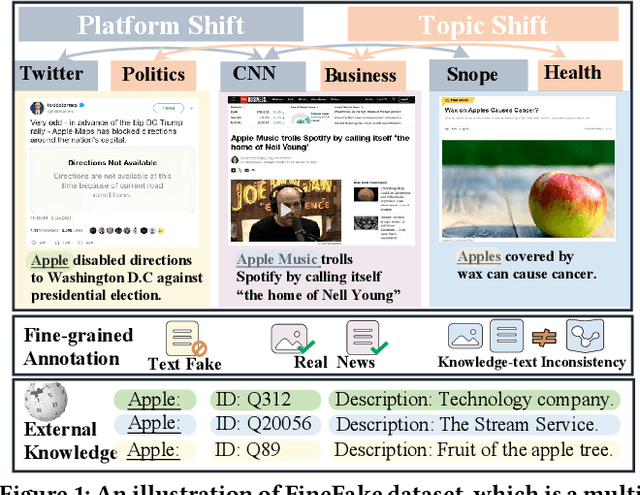
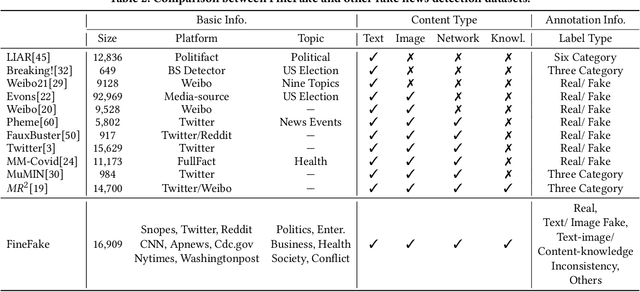
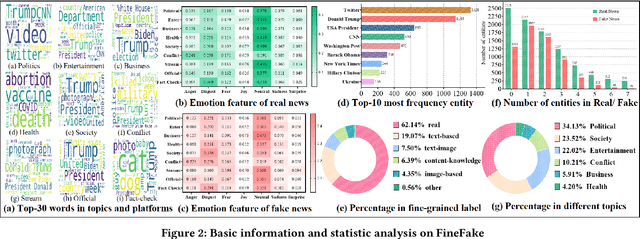
Abstract:Existing benchmarks for fake news detection have significantly contributed to the advancement of models in assessing the authenticity of news content. However, these benchmarks typically focus solely on news pertaining to a single semantic topic or originating from a single platform, thereby failing to capture the diversity of multi-domain news in real scenarios. In order to understand fake news across various domains, the external knowledge and fine-grained annotations are indispensable to provide precise evidence and uncover the diverse underlying strategies for fabrication, which are also ignored by existing benchmarks. To address this gap, we introduce a novel multi-domain knowledge-enhanced benchmark with fine-grained annotations, named \textbf{FineFake}. FineFake encompasses 16,909 data samples spanning six semantic topics and eight platforms. Each news item is enriched with multi-modal content, potential social context, semi-manually verified common knowledge, and fine-grained annotations that surpass conventional binary labels. Furthermore, we formulate three challenging tasks based on FineFake and propose a knowledge-enhanced domain adaptation network. Extensive experiments are conducted on FineFake under various scenarios, providing accurate and reliable benchmarks for future endeavors. The entire FineFake project is publicly accessible as an open-source repository at \url{https://github.com/Accuser907/FineFake}.
 Add to Chrome
Add to Chrome Add to Firefox
Add to Firefox Add to Edge
Add to Edge